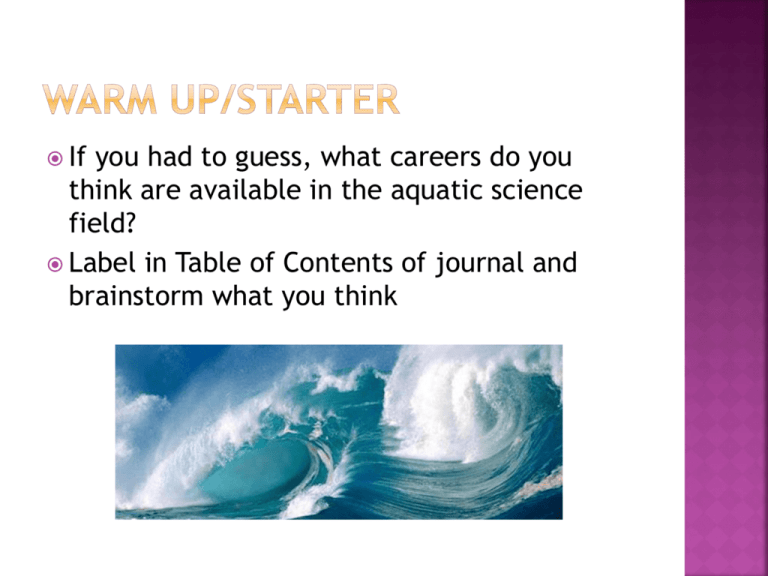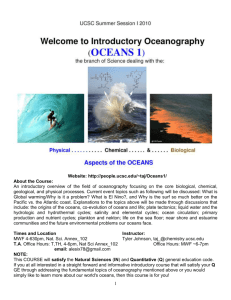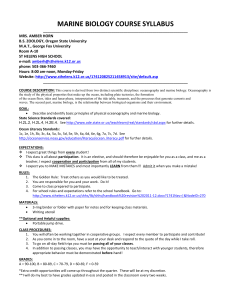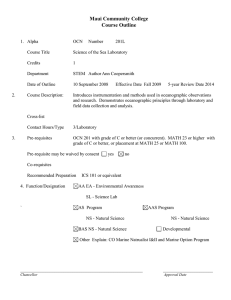Oceanography Notes
advertisement

If you had to guess, what careers do you think are available in the aquatic science field? Label in Table of Contents of journal and brainstorm what you think Given a lecture, you will investigate the different branches of oceanography and career opportunities available. Also called marine science or oceanology Definition: A branch of Earth science that revolves around the study of oceans Oceanography covers a wide range of topics, including marine life and ecosystems, ocean circulation, plate tectonics and the geology of the sea floor, and the chemical and physical properties of the ocean An oceanographer is a scientist that studies different aspects of the seas Physical and biological http://oceanservice.noaa.gov/facts/oceanographe r.html Different types of Oceanographers Also called: Marine biologists Fisheries scientists Currently the Most well known Most popular Most competitive Sustainable seafood harvesting Plants and animals responses to pollution Use of natural ocean resources for Industry Medical products DNA, molecular, and cellular processes of marine organisms Ocean temperature Effects on water density Wave motions and interactions with sea floor Tides Ocean currents Movement of light and sound through water Sea water chemicals Effects of pollutants Chemical reactions in marine ecosystems Desalinization processes Movement of trace chemicals Help in learning ocean currents Properties of rocks of the ocean floor Plate tectonics of the ocean floor Marine topography Underwater mountain ranges and valleys Information to increase knowledge about our Earth’s history. Draw a picture in your out section illustrating what each type of oceanographer we learned about today studies. Each picture must be labeled with the oceanographer name. Assign project for Oceanographer types Hand out syllabus Due when?











